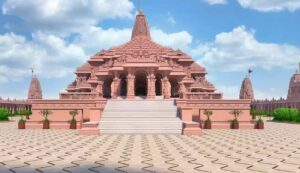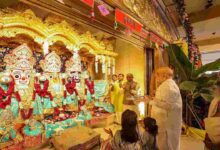Ayodhya: Brass plates depicting the history of Ram Janmabhoomi movement installed
Ayodhya: At the Ram Janmbhoomi Temple in Ayodhya, bronze plaques containing the movement’s history have been erected. In honour of Ram Navami, on April 6, The ‘Surya Tilak‘ illuminated Ram Lalla’s forehead at the Ram Janmabhoomi Temple in Ayodhya.

The ‘Surya Tilak’ took place at precisely noon when a ray of sunshine fell on the idol of Ram Lalla’s forehead, creating a heavenly tilak.
Additionally, on the auspicious festival of Ram Navami, nearly 2.5 lakh earthen lamps were lighted along the banks of the Saryu River at Chaudhary Charan Singh Ghat.
The building of the Ram Temple complex is expected to be finished by April, according to Nripendra Misra, the chairman of the Shri Ram Janmabhoomi Temple building Committee.
“All of the statues in the temples that are outside or inside the rampart will be here by 30 April, and almost all of them will be installed between 25 March and 15 April,” stated the Chairman of the Committee.
On January 22, 2024, Prime Minister Narendra Modi conducted the ceremonies at the Grand Lord Ram Temple in Ayodhya’s Pran Pratishta ceremony.
The ancient Nagara style was used in the construction of the Shri Ram Janmbhoomi Mandir. It measures 380 feet long (east-west), 250 feet wide, and 161 feet high. It is held up by 44 doors and 392 pillars in all.
The temple has elaborately carved representations of Hindu gods, goddesses, and deities on its walls and pillars. The childhood form of Bhagwan Shri Ram, the idol of Shri Ramlalla, is located on the ground floor main sanctum sanctorum.
Renowned Karnataka sculptor Arun Yogiraj created the idol of “Ram Lalla”. The idol weighs 1.5 tonnes and is 51 inches tall. The idol shows Lord Ram standing on a lotus made of the same stone at the age of five.

